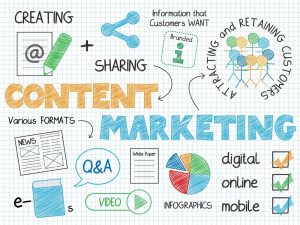You’ve likely heard of video advertisement, but have you ever considered it for your business? Having video content for product advertisement can help take your business to the next level, and in today’s blog, we’re explaining why.
From increasing engagement to higher retention rates to customers understanding your product better, video advertisements have many benefits. Keep reading to learn more!
Benefits of Video Content in Advertising
Increased engagement rates, higher retention rates, improved brand recall, and a better understanding of your product by customers are some of the benefits of video content. Let’s take a closer look.
Increased Engagement Rates
One of the significant advantages of using video content for product advertisement is its increased engagement rates compared to traditional advertising mediums. Here are some key points to consider:
- Visual Appeal: Video content captures attention and engages viewers through its visual appeal. It combines moving images, colors, and sound to create a more immersive and captivating experience for the audience.
- Storytelling Potential: Videos have the power to tell stories and evoke emotions. By creating compelling narratives, brands can connect with their audience on a deeper level, generating stronger engagement and interest in the product or service being advertised.
- Higher Retention Rates: People remember visual content better than text-based content. Videos are inherently more memorable, leading to higher retention rates among viewers. This increased retention translates into better brand recall and a higher probability of converting viewers into customers.
- Improved Social Sharing: Video content is highly shareable on social media platforms. People who come across an entertaining or informative video are likelier to share it with their network, potentially exposing the brand to a broader audience. This organic sharing can significantly enhance the reach and visibility of an advertising campaign.
- Enhanced Understanding of Products: Videos allow businesses to showcase their products or services in action. Potential customers better understand the product’s features, benefits, and value proposition through demonstrations, tutorials, or product tours. This clarity fosters trust and confidence in the brand, which can lead to increased sales.
- Higher Engagement Metrics: Video content drives higher engagement metrics such as likes, comments, and shares. Viewers are likelier to interact with videos by leaving comments, asking questions, or sharing opinions.
This engagement not only boosts the visibility of the content but also provides an opportunity for the brand to interact directly with its audience, building a sense of community and loyalty.
High Retention Rates; Improved Brand Recall
Video content has been shown to have higher retention rates and improved brand recall compared to other forms of advertising. Here’s how video content achieves these outcomes:
- Visual and Auditory Engagement: Video engages multiple senses, combining visuals and audio to create a more immersive experience for viewers. This multi-sensory approach captures attention and increases engagement, making it more likely for the audience to remember the content.
- Storytelling and Emotional Connection: Videos can tell stories and evoke emotions. By creating compelling narratives and utilizing visual elements, brands can establish a deeper connection with viewers. This emotional engagement facilitates better retention and brand recall.
- Memorability: People remember visual content better than text-based content. With its dynamic visuals and audio elements, video content creates a lasting impression on viewers, enhancing brand recall and recognition.
- Association With the Brand: Using video content allows brands to showcase their unique personality, values, and offerings in a visual and engaging way. This association between the brand and the content helps improve brand recall as viewers connect the memorable video experience with the brand.
- Social Sharing: Video content is highly shareable on social media platforms, allowing for a wider reach and increased exposure for the brand. When viewers enjoy a video, they are more likely to share it with their network, amplifying the brand message and increasing brand recall among a larger audience.
Customers Understand Your Product Better
Video content is an effective medium for businesses to help customers understand their products better. Here’s how video content achieves this outcome:
- Demonstration of Product Features and Benefits: Video content allows businesses to showcase their products and demonstrate how they work. By explaining product features and highlighting benefits that the customers may be interested in, companies can provide a clear understanding of the product and its value proposition.
- Product Tutorials and User Guides: Video tutorials and user guides effectively teach customers how to use a product correctly. By showing the customers how to operate and troubleshoot the product, businesses can reduce customer support requests and improve customer experience and satisfaction.
- Visual Explanation: Videos can better explain complex ideas and concepts relating to products than text-based content. By breaking down the product features, specifications, and benefits, businesses can make it easy for customers to comprehend the product and its functionalities.
- Customer Testimonials and Reviews: Video content featuring customer testimonials and reviews help potential customers gain a better understanding of the product’s performance and value. Businesses can improve credibility, trust, and customer loyalty by featuring customers that can share their experiences with the product.
Examples of Successful Video Ad Campaigns
- Apple – “Welcome Home” – Apple’s ad campaign for their HomePod smart speaker features a music video directed by Spike Jonze and featuring FKA Twigs. The ad showcases the HomePod’s innovative design and impressive sound quality in a visually stunning way. The video went viral and won multiple awards, including a Cannes Lions Grand Prix award.
- Dove – “Real Beauty Sketches” – In this ad campaign, Dove created a social experiment asking women to describe their appearance to a forensic sketch artist.
The same women were then described to the artist by someone they had met earlier that day, creating two sketches that showcased the contrast between how the women saw themselves and how others saw them. The video went viral and received over 163 million views on YouTube, becoming one of the most-viewed video ads of all time. - Old Spice – “The Man Your Man Could Smell Like” – Old Spice’s ad campaign features a suave and confident spokesperson showcasing the brand’s line of men’s hygiene products. The ads were humorous, irreverent, and visually appealing, becoming an instant hit among men and women.
- Nike – “Dream Crazy” – Nike’s ad campaign features former NFL quarterback Colin Kaepernick as the spokesperson. The ad showcases individuals who have accomplished great things despite adversity and encourages audiences to “believe in something, even if it means sacrificing everything.”
These are just a few examples of successful video ad campaigns that have achieved viral success, increased brand awareness, and drive sales for their respective brands.
Types of Video Advertisement
Product Demos and Tutorials
Product demos and video tutorials are powerful product advertisement tools, as they can help potential customers understand a product’s features, benefits, and how it works better.
First, there’s the visual appeal. Product demos and tutorials showcase the product in an engaging, immersive way that grabs the customer’s attention in a way that words can’t.
Second, video demos and tutorials can help customers better understand the product and how to use it. These can be instrumental for products you use at home.
Written instructions are essential, but a video demonstration can take your product to the next level, showing how easy it is to use. Or, if it’s complex, provide step-by-step instructions to ensure your customers can get it right the first time.
Brand Storytelling and Emotional Appeals
Video content is an effective tool for brand storytelling and creating emotional appeals because it can deliver information, experiences, and emotions in a compelling, immersive way.
Visual storytelling can show products and services in action, create vivid settings, and evoke emotions that resonate with the audience.
Video content is also an excellent medium for building authenticity. By showcasing real people and genuine moments, brands can create meaningful connections with their audiences. Authenticity also helps to build brand trust and loyalty.
Video content can create emotional appeals by showcasing narratives that create empathy, inspire, or entertain. Creating emotional experiences that resonate with the audience can strengthen your relationships with your customers and increase their likelihood of sharing your content.
Explainer Videos
An explainer video is a type of short video that businesses and individuals use to explain their products, services, or messages in an engaging and understandable way.
Explainer videos use concise language and visuals to convey complex topics, making them an effective educational tool. They typically range from 30 seconds to two minutes, making it easy for viewers to watch and understand.
Explainer videos follow a simple structure to grab the viewer’s attention and keep them engaged. This structure typically includes the following elements:
- Problem: The video begins by identifying a problem that the viewer is facing. This could be a problem that the business or individual’s product or service solves.
- Solution: The video then solves the problem, showcasing how the product or service can help the viewer.
- Features and Benefits: The video highlights the key features and benefits of the product or service, ensuring the viewer understands how it works and can benefit them.
- Call-to-Action: Finally, the video ends with a call-to-action, encouraging the viewer to take action, such as visiting a website or contacting the business for more information.
Explainer videos are highly effective marketing tools because they are engaging, memorable, and shareable. They allow businesses to communicate their messages in a way that is easy to understand and visually pleasing. Videos are also highly shareable on social media and other platforms, increasing brand awareness and website traffic.
Testimonials/Customer Reviews
Testimonials and customer reviews are powerful tools businesses use to showcase their customers’ positive experiences and satisfaction. They work by providing social proof, building credibility, and influencing purchasing decisions.
When potential customers see testimonials or read customer reviews, it creates a sense of trust and confidence in the brand or product. Here’s how testimonials/customer reviews work:
- Social Proof: Testimonials act as social proof. When potential customers see positive experiences shared by others, they are more likely to trust the brand and believe they will have a similar positive experience.
- Credibility: Testimonials establish credibility for a business or product. When customers share their positive experiences, it validates the claims made by the brand and demonstrates that real people have experienced the benefits and value offered.
- Influence: Testimonials and customer reviews can influence purchasing decisions. Many customers read reviews and testimonials before purchasing to get insights into a product’s quality, reliability, and performance. Positive testimonials can sway potential customers toward making a purchase.
- Authenticity: Testimonials are often seen as authentic and unbiased because they come directly from customers. This authenticity adds credibility to the brand and helps potential customers feel more confident about their decision.
Businesses can collect testimonials through various methods such as surveys, feedback forms, or by reaching out to satisfied customers. Testimonials can be written, recorded as video testimonials, or shared as ratings and reviews on websites, social media, and review sites.
Live Videos/Behind-the-Scenes Content
Live videos and behind-the-scenes content are popular types of content businesses use to connect with their audience and build brand awareness. They provide a unique, authentic view of a company or its products, create a sense of community, and build engagement with audiences.
Live videos and behind-the-scenes content build brand authenticity, build community, increase engagement, and raise awareness.
Businesses can create live videos and behind-the-scenes content through social media channels like Facebook, Instagram, and YouTube or on their websites. These types of content can be produced affordably, and audience members can feel a deeper connection to a brand, thereby helping establish customer loyalty.
Create Video Content for Your Brand With REVITY
Are you ready to create video content that resonates with your audience, increases engagement, and tells a story like nothing else can? Then it’s time to partner with Revity for the ultimate in video advertisement strategy.
Revity Marketing Agency offers high-quality video content, including every type of video described in this blog. Whether you want to create an ad, a how-to video, or behind-the-scenes content, we’re your go-to source.
Whether you have questions or are ready to start, we’re here to help. Call us at 801.895.4034, or contact us through our website form. Let Revity take your business’s video content to the next level!
































